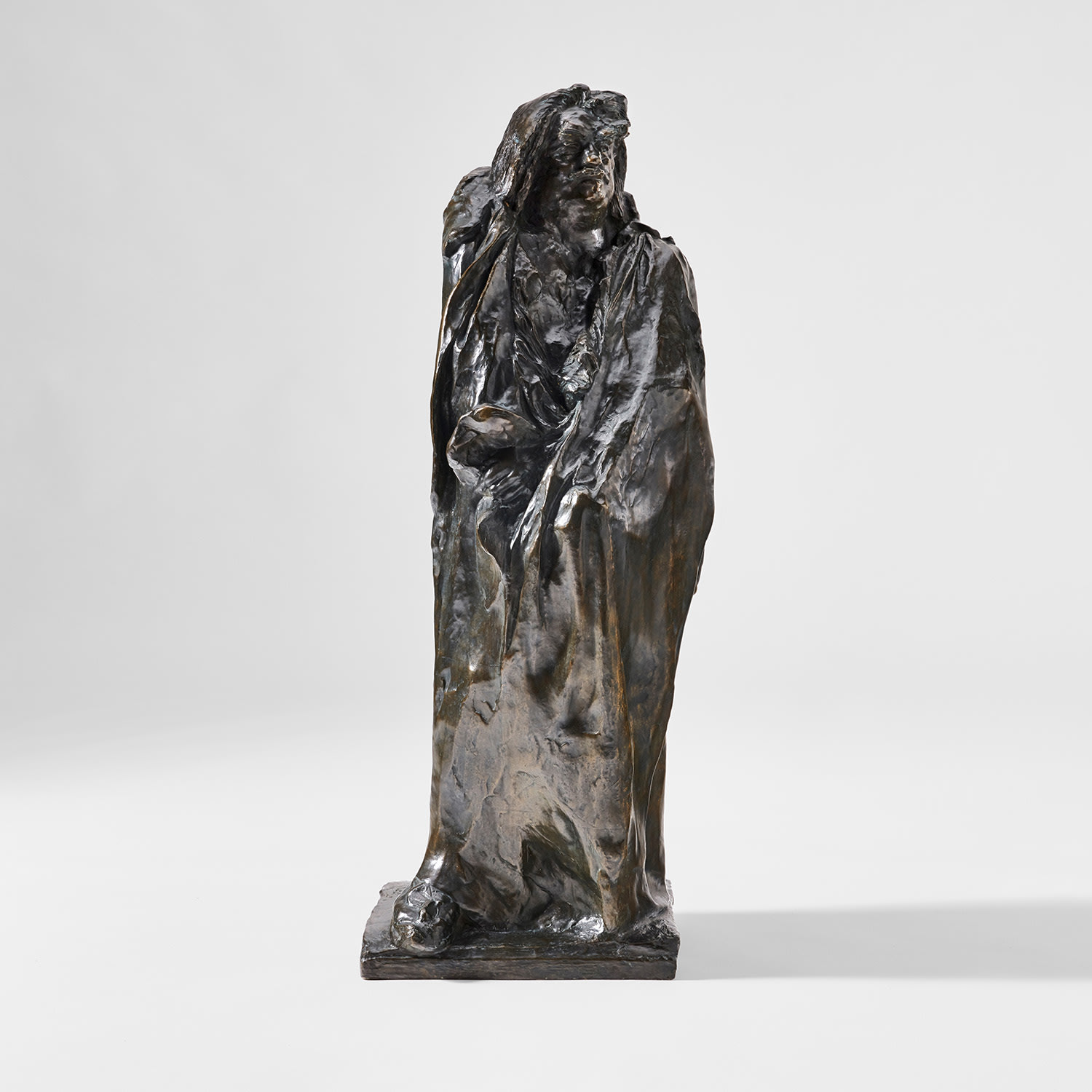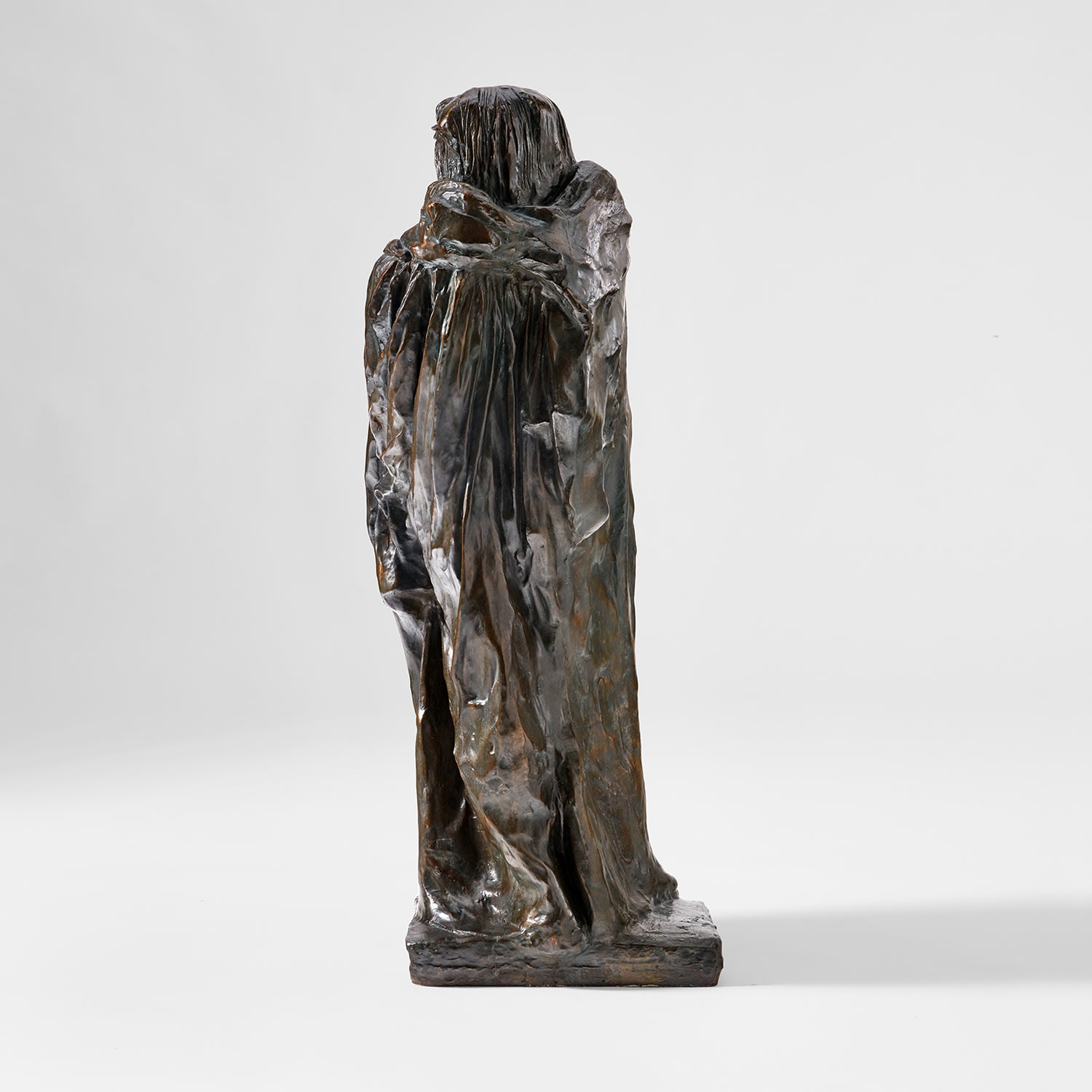





重要日本私人收藏
126Ο
奧古斯特·羅丹
《波薩,垂褶研究–連帽及蕾絲褶邊披肩》
款識:A Rodin N° 3/8(人像右腳底部右方)© BY MUSEE Rodin 1983(底座底部左下方)
鈴印:Émile Godard 鑄造廠(底座底部右下方)
鈴印:Émile Godard 鑄造廠(底座底部右下方)
銅雕
44 x 17 1/4 x 17 1/4 英吋 (111.8 x 43.8 x 43.8 公分)
1897年構思,1983年於巴黎 Émile Godard 鑄造廠鑄銅,共有8版、4版博物館鑄版,此作為第3版。
此版本的其他鑄品被多家機構納入永久館藏,包括:北海道函館縣立美術館 (3/8); 紐卡素地區美術館 (5/8); 巴黎羅丹美術館 (I/IV); 首爾羅丹畫廊 (III/IV); 土爾美術館 (IV/IV)。
此版本的其他鑄品被多家機構納入永久館藏,包括:北海道函館縣立美術館 (3/8); 紐卡素地區美術館 (5/8); 巴黎羅丹美術館 (I/IV); 首爾羅丹畫廊 (III/IV); 土爾美術館 (IV/IV)。